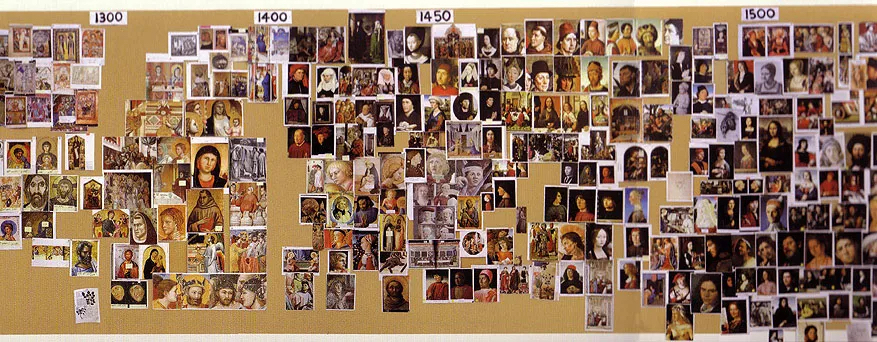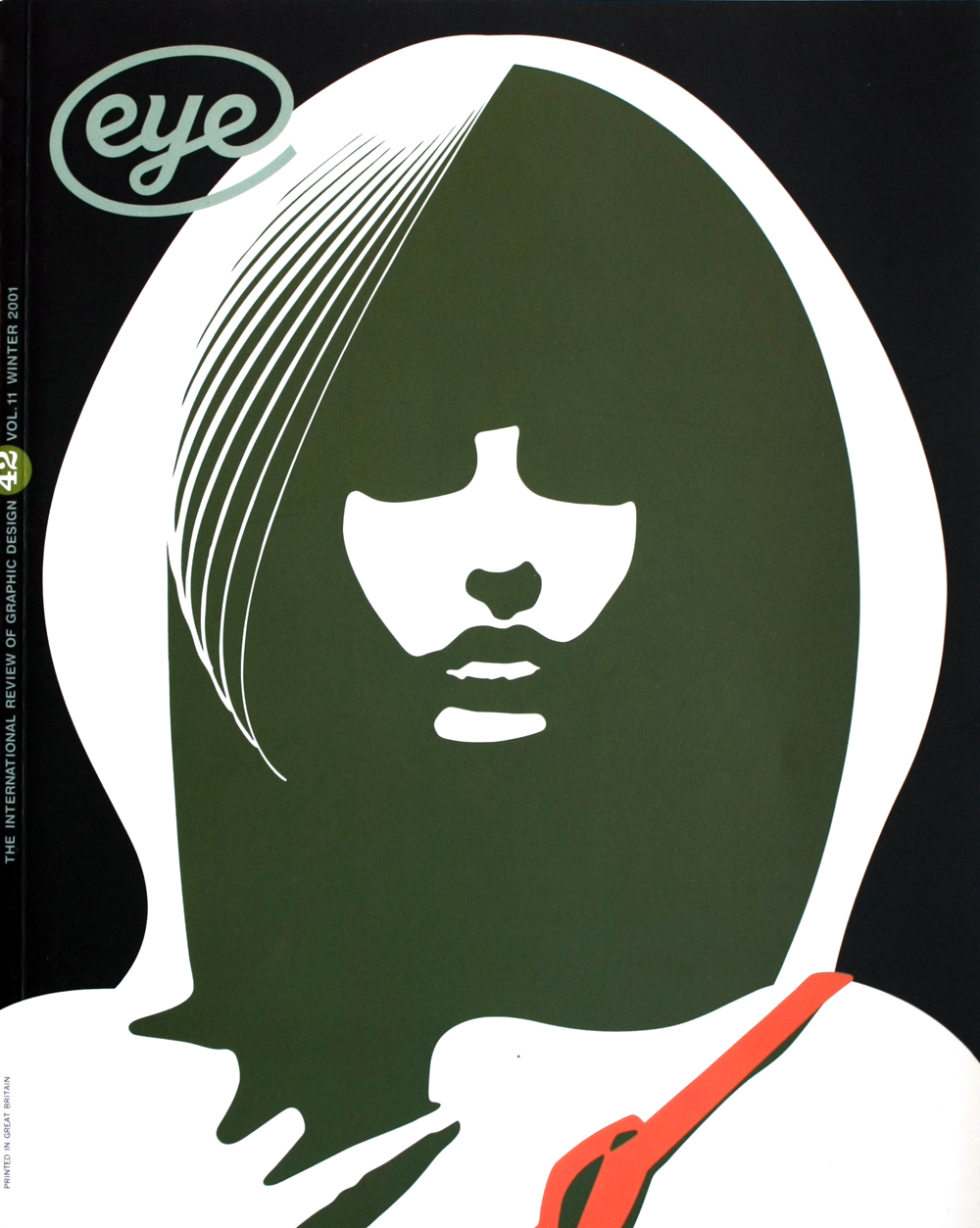Winter 2001
Hockney asks the scientific question: ‘How?’
Secret Knowledge
By David Hockney. Published by Thames & Hudson, £35
‘The Great Wall’, four-page gatefold from Secret Knowledge.
After all the rhetoric expended upon new collaborations between art, science and technology, this straightforward and conventionally presented book delivers something genuinely radical – a new way of understanding a big slice of art history. Hockney has pieced together an extended visual research document about his investigations into the way painters used optical methods to represent the world about them. And he has put it together with a flair and coherence (not to mention speed) that will inspire anyone involved in ‘graphic authorship’ and ‘research’. Part history, part visual feast and part thriller, Hockney’ Secret Knowledge invites the reader/viewer to make the same discoveries, and to share his excitement as fresh evidence comes to light.
This particular quest was prompted by an awe-struck visit to the Ingres exhibition at London’s National Gallery in January 1999. Hockney followed his hunch that the artist’s uncannily accurate portrait drawings must have been aided by the skilful use of an optical aid – the camera lucida – which he then learned to use himself. His article about the subject, printed in the Royal Academy magazine that summer, triggered further articles and detailed correspondence with Martin Kemp (art historian), Charles Falco (optical scientist), John Walsh (of the Getty Museum) and others, which enabled him to test and elaborate upon his emerging theory – that the art of the period from 1430 to 1839 is dominated by the use of optics. By this he means the camera obscura, lenses and concave mirrors with which painters achieved a likeness, the closely guarded, largely forgotten ‘secret knowledge’ of the book’s title. Even painters ignorant of these secrets, he argues, adopted the optical ‘look’, which dominated visual culture for four centuries until the invention of the camera – not so much a breakthrough as a means to fix the image with chemicals instead of the artist’s hand. The rapid spread of photography gave rise to new ways of seeing as vanguard painting – Cézanne, Van Gogh – sought to distinguish itself from the lens: hence modern art.
Hockney quotes (Italian art historian) Roberto Longhi’s point that paintings themselves are primary historical sources. As a painter, Hockney’s instinct is to ask ‘how?’ where another might only ask ‘what?’ or ‘why?’ In addition to his research and experiments with optical methods, Hockney and his assistant David Graves pieced together a ‘Great Wall’ of 500 years of painting. ‘We are emphasising the early awkwardness with the arrival of mirrors and lenses and the return of awkwardness,’ writes Hockney to Martin Kemp, ‘but we have a rich visual story going on here and we are adding more to it all the time. I think it will excite you.’
The book is organised into three main sections: visual evidence; textual evidence (contemporary accounts of painting and optics); and correspondence. The 500-year wall is shown in a four-page gatefold at the start of the book. Familiar images from the history of art are repeated and juxtaposed and manipulated to emphasise the questions and arguments. Hockney points out what technology has made possible: ‘Computers have allowed cheaper and higher-quality colour printing, leading to a great improvement in the last fifteen years in the standard of art books. And now with colour photocopiers and desktop printers anyone can … place works that were previously separated by hundreds or thousands of miles side by side … it was only by putting pictures together in this way that I began to notice things.’
Secret Knowledge tackles a big subject, in a way that is both entertaining and serious. As the author says, ‘you bring your own time to a book, it is not imposed, as with film or television.’ And it seems that the market agrees: the first print run of 25,000 sold out long before the astonished publishers had time to order a reprint.

John L. Walters, editor of Eye, London
First published in Eye no. 42 vol. 11, 2001
Eye is the world’s most beautiful and collectable graphic design journal, published quarterly for professional designers, students and anyone interested in critical, informed writing about graphic design and visual culture. It is available from all good design bookshops and online at the Eye shop, where you can buy subscriptions and single issues.

